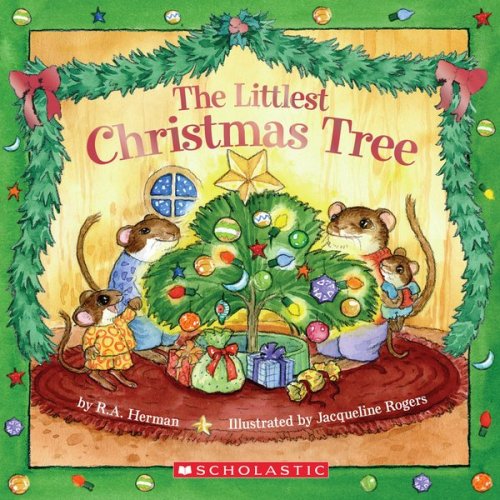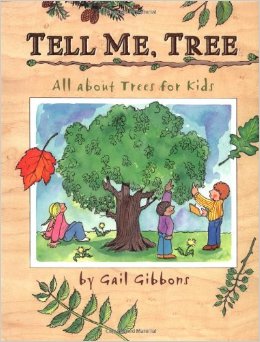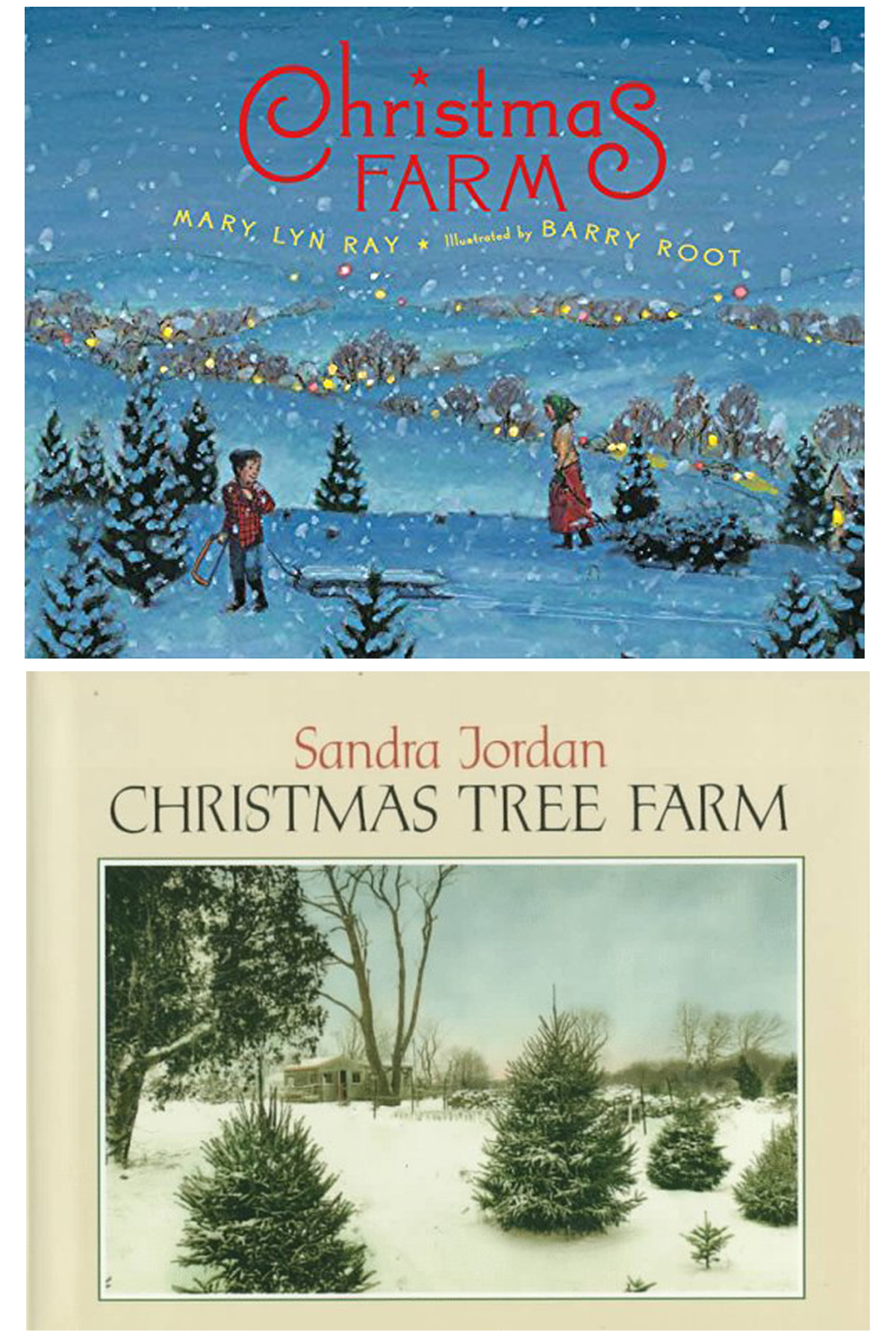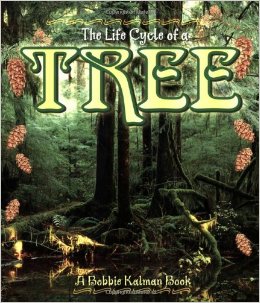 Relevancy and Engagement
agclassroom.org/ne/
Relevancy and Engagement
agclassroom.org/ne/
Lesson Plan
Discover Christmas Trees (Grades K-2)
Grade Level
Purpose
Students explore the history of the Christmas tree, explain the life cycle of a conifer, identify types of trees and how they adapt, discover what it's like to work on a Christmas tree farm, and examine the ecology of conifer trees. Grades K-2
Estimated Time
Materials Needed
Engage:
- The Littlest Christmas Tree by R.A. Herman
Activity 1: The History of the Christmas Tree
- Recording of O Tannenbaum, sung by the Vienna Boys Choir
- O Tannenbaum Lyrics handout
Activity 2: Getting a Sense of Conifers
- Pictures of a deciduous tree and a coniferous tree.
- Tell me, Tree by Gail Gibbons
- Green construction paper
- Scissors for students
- White paper for drawing
- Crayons or colored pencils
Activity 3: Pines, Spruces, Firs, and More
- Picture of a fir or spruce tree
- Clippings from a pine, spruce, and fir tree—enough for students to work in pairs to identify them.
- If you cannot obtain these clippings from local trees, ask the local florist if they have any. Many Christmas floral arrangements include evergreens.
- Note, You will not need a tree key for this activity, but if you would like to have one for your own reference, then a very good, simple one is Tree Finder: A Manual for the Identification of Trees by their Leaves, by May Theilgaard Watts.
Activity 4: Real or Artificial Christmas Trees?
- Shel Silverstein’s poem, Peckin’
- This poem can be read from the book A Light in the Attic or accessed online through a Google search
- Poster paper, 3’ x 5-6’
- Paint for Christmas tree
- Art paper for students
- Art materials for student projects—very flexible (see activity directions), could be crayons, colored pencils, markers, and/or natural items like dried seeds, bits of cones, etc.
Activity 5: A Four-Season Job
- Christmas Farm by Mary Lyn Ray
- Christmas Tree Farm by Sandra Jordan
- If you can get both books, do so. One is fiction, the other non-fiction, so it provides an opportunity for you to compare the two writing styles.
- 1-minute video, Hurds Family Farm Christmas Trees, narrated by a young boy whose family owns a NY Christmas tree farm
Activity 6: Nutrient Cycling
- The Life Cycle of a Tree by Bobbie Kalman
Vocabulary
conifer: a tree that bears cones and evergreen needlelike or scalelike leaves
Did You Know?
- Artificial Christmas trees were developed in Germany during the 19th century and later became popular in the United States.1
- Helicopters help to lift harvested Christmas trees from farms.1
- Live Christmas trees have been sold commercially in the United States since about 1850.1
Background Agricultural Connections
This lesson contains multiple activities that can be completed in any order. You may also pick and choose which activities to complete to meet your classroom needs.
Christmas Tree Farming
Real Christmas trees are grown on farms just like any other agricultural crop. It takes 6-10 years for a farmer to grow a Christmas tree. Christmas trees are grown in most states. Oregon, Michigan, North Carolina, Pennsylvania, Wisconsin, and New York rank highest in production. Visit the Interactive Map to see where your state ranks. Depending on your location, real Christmas trees can be obtained from natural forests where tree harvesting is allowed, directly from a local Christmas tree farm, or from local retail stores who market trees originally obtained from Christmas tree farms across the country.
Science Behind the Christmas Tree
Traditional Christmas trees in the United States can be one of several varieties of conifers including fir, pine, spruce, cypress, or cedar. To learn more about each of these varieties, visit the Tree Varieties webpage from the National Christmas Tree Association website. Each of these tree varieties have unique colors, sizes, shapes, and needles.
History of the Christmas Tree
Long before the advent of Christianity, plants and trees that remained green all year had a special meaning for people in the winter. Just as people today decorate their homes during the festive season with pine, spruce, and fir trees, ancient peoples hung evergreen boughs over their doors and windows. In many countries, it was believed that evergreens would keep away witches, ghosts, evil spirits, and illness.
In the Northern hemisphere, the shortest day and longest night of the year falls on December 21 or December 22 and is called the winter solstice. Many ancient people believed that the sun was a god and that winter came every year because the sun god had become sick and weak. They celebrated the solstice because it meant that at last the sun god would begin to get well. Evergreen boughs reminded them of all the green plants that would grow again when the sun god was strong and summer would return.
The ancient Egyptians worshipped a god called Ra, who had the head of a hawk and wore the sun as a blazing disk in his crown. At the solstice, when Ra began to recover from the illness, the Egyptians filled their homes with green palm rushes which symbolized for them the triumph of life over death.
Early Romans marked the solstice with a feast called the Saturnalia in honor of Saturn, the god of agriculture. The Romans knew that the solstice meant that soon farms and orchards would be green and fruitful. To mark the occasion, they decorated their homes and temples with evergreen boughs. In Northern Europe, the mysterious Druids, the priests of the ancient Celts, also decorated their temples with evergreen boughs as a symbol of everlasting life. The fierce Vikings in Scandinavia thought that evergreens were the special plant of the sun god, Balder.
Germany is credited with starting the Christmas tree tradition as we now know it in the 16th century when devout Christians brought decorated trees into their homes. Some built Christmas pyramids of wood and decorated them with evergreens and candles. It is a widely held belief that Martin Luther, the 16th-century Protestant reformer, first added lighted candles to a tree. Walking toward his home one winter evening, composing a sermon, he was awed by the brilliance of stars twinkling amidst evergreens. To recapture the scene for his family, he erected a tree in the main room and wired its branches with lighted candles.
Most 19th-century Americans found Christmas trees an oddity. The first record of one being on display was in the 1830s by the German settlers of Pennsylvania, although trees had been a tradition in many German homes much earlier. The Pennsylvania German settlements had community trees as early as 1747. But, as late as the 1840s, Christmas trees were seen as pagan symbols and not accepted by most Americans.
It is not surprising that, like many other festive Christmas customs, the tree was adopted so late in America. To the New England Puritans, Christmas was sacred. The pilgrims’ second governor, William Bradford, wrote that he tried hard to stamp out “pagan mockery” of the observance, penalizing any frivolity. The influential Oliver Cromwell preached against “the heathen traditions” of Christmas carols, decorated trees, and any joyful expression that desecrated “that sacred event.” In 1659, the General Court of Massachusetts enacted a law making any observance of December 25 (other than a church service) a penal offense; people were fined for hanging decorations. That stern solemnity continued until the 19th century, when the influx of German and Irish immigrants undermined the Puritan legacy.
In 1846, the popular royals, Queen Victoria and her German Prince, Albert, were sketched in the Illustrated London News standing with their children around a Christmas tree. Unlike the previous royal family, Victoria was very popular with her subjects, and what was done at court immediately became fashionable—not only in Britain, but with fashion-conscious East Coast American Society. The Christmas tree had arrived.
By the 1890s, Christmas ornaments were arriving from Germany, and Christmas tree popularity was on the rise around the U.S. It was noted that Europeans used small trees about four feet in height, while Americans liked their Christmas trees to reach from floor to ceiling.
The early 20th century saw Americans decorating their trees mainly with homemade ornaments, while the German-American sect continued to use apples, nuts, and marzipan cookies. Popcorn joined in after being dyed bright colors and interlaced with berries and nuts. Electricity brought about Christmas lights, making it possible for Christmas trees to glow for days on end. With this, Christmas trees began to appear in town squares across the country, and having a Christmas tree in the home became an American tradition.
Engage

- Begin by asking students to describe what the world around them is like in winter time. They may come up with words like cold, dark, snowy, icy, dead, quiet, nothing growing, etc.
- Read aloud the story The Littlest Christmas Tree, which introduces the lyrics to the historic song, “Oh Christmas Tree."
- Building from the lyrics to the song, summarize with students some of the history of the Christmas tree (information found in the Background Agricultural Connections section of the lesson). Point out that people have, for centuries, seen the Christmas tree as a symbol of life and hope during this cold, dark, seemingly lifeless time of year—a reminder that spring will come again.
Explore and Explain
Activity 1: The History of the Christmas Tree
- Explain to students that a good way to lift your spirits at any time of year is by singing and making music, and that musicians have written many pieces of music to celebrate the hopeful qualities of evergreen trees. In Germany, these songs date back to the 1500s, including the well-known O Tannenbaum, written by Ernst Anschütz in 1824. Your students may have heard of its English version, O Christmas Tree. The German word, Tannenbaum, translates into English as “fir tree” (die Tanne) or Christmas tree (der Weihnachtsbaum).
- Listen to O Tannenbaum, sung by the Vienna Boys Choir, available on YouTube.
- Using the attached O Tannenbaum Lyrics handout, read the literal English translation aloud to your students and discuss together the following questions:
- Why does the poet describe the Christmas tree’s branches as “loyal?"
- The lyricist, Ernst Anschütz, says that the Christmas tree, with its evergreen branches, gives him hope. Why might this be so?
- What is the lesson that the poet thinks the Christmas tree can teach him?
Activity 2: Getting a Sense of Conifers
- Talk with your students about what it must be like to live outside all the time in winter, exposed to cold and snow and ice. Ask, "How do animals adapt to winter? What about plants?"
- Ask your students how trees in winter are different from trees in summer. What do trees do to survive the cold and snow and ice of winter? Chances are, they’ll say they lose their leaves. That’s right, but only for some trees.
- Encourage them to think about other trees they know. Explain that many trees are “evergreens” and keep their leaves all year long. These kinds of trees have some very different characteristics compared to deciduous trees (trees that lose their leaves).
 Read Tell Me, Tree, by Gail Gibbons, to your students. This picture book offers an excellent introduction to trees—their parts (buds, bark, seeds, leaves, fruit), functions (how they grow, photosynthesis), characteristics of conifers and deciduous trees, and more.
Read Tell Me, Tree, by Gail Gibbons, to your students. This picture book offers an excellent introduction to trees—their parts (buds, bark, seeds, leaves, fruit), functions (how they grow, photosynthesis), characteristics of conifers and deciduous trees, and more.- Show students the pictures of a deciduous tree and a coniferous tree, and ask them to name some of the traits of each kind of tree. This will help them incorporate the information you shared with them in Tell me, Tree.
- Have your students cut out different shapes from green construction paper (circle, square, triangle, rectangle), and ask your students which shape might work best for a tree living in a climate that gets lots of snow, and why.
- Have them draw and color a picture of a conifer in winter, along with the animals that might find food and shelter in the tree.
Activity 3: Pines, Spruces, Firs, and More
- Show your students a picture of a fir or spruce tree, and ask them what it is. Chances are, they’ll call it a pine tree. You’d be amazed how many children’s books do the same! There are dozens of species of evergreen trees both native and introduced, and only a handful of those are actually pines. Welcome to the world of conifers—fir, spruce, juniper, cedar, cypress, larch, pine, and more!
- Introduce your students to a simple, handy, alliterative phrase they can use to differentiate among conifer types. “Pine needles come in packets. Spruce needles are square. Fir needles are flat and friendly.” Or an even quicker way to remember it: “Pines come in packets, spruces are square, firs are flat and friendly.” This phrase relates to the shared characteristics of trees in each of these three main groupings of conifers. Pines share the characteristic that their needles grow in packets or bundles, called “fascicles.” Spruce needles are square in cross-section, so when you roll one in your fingers, you’ll notice the bump-bump-bump of the squared sides. Fir needles are flat, and when you grab a fir branch, it’s soft to the touch, not prickly like pines and spruces. This phrase over-simplifies the real-life story of diversity in the forest, since, for instance, there are conifer species like Eastern hemlock that have flat needles but aren’t firs, but it’s a great starting point.
- Have students sit together in pairs, and give each pair a clipping of pine, spruce, and fir. Talk through the process of noticing the needle packets on the pine twig, the square needles on the spruce twig, and the flat, soft (not prickly) needles of the fir.
- You may only have time and resources for the in-class portion of this activity, but if you can, take your students to a nearby Christmas tree farm where all the conifers are just the right height for kids to touch and study, and where you can carry out a number of the activities described in this lesson.
- As you explore the farm, or your school yard, have students identify each different tree species you encounter as pine, spruce, or fir. Collect a few, small twig clippings (with the tree farmer’s permission, of course!) of the conifers your students discover, and have them create a display poster back in the classroom. How many different kinds of conifers did they find?
Activity 4: Real or Artificial Christmas Trees?
- Read Shel Silverstein’s poem, Peckin’, to your students. The poem offers a funny look at a not-so-funny notion, that artificial trees offer none of the life-giving functions and values of real trees. Some questions you might ponder with your students:
- Why does the poet think that the bird pecking on the plastic tree is the saddest thing he’s ever seen?
- What’s so sad about it?
- What do woodpeckers get from real trees? (Food (insects), nesting sites (woodpeckers make holes that they and many other animals nest in), and oxygen to breath. Plus, seeds that grow new trees that will support the great-great-great-off spring of today’s wood peckers.)
- Make a big (life-size if possible) poster of a Christmas tree. Use a big sheet of poster paper. You can have students draw and paint the Christmas tree if time allows, or you can paint it and have it ready to go for the activity.
- Have your students brainstorm together all of the living and non-living parts of their world (specific animals, people, plants, soil, air, water, fungus, insects, etc) that benefit from a real Christmas tree—before it’s cut, after it’s cut, after it dies, and after it decays and becomes part of the soil.
- Give each student a small (for example, 6”x6”) piece of paper on which to illustrate one of these living or non-living elements, with whatever artistic materials you’d like them to use. This could simply be traditional art materials like crayons, paint, cut-out paper, and so on, or it could be natural materials that they gather, like dried seeds, bits of cones, pebbles and so on, that they glue onto the paper.
- Have them attach their creations to the Christmas tree, so that it is decorated with the community of life it supports.
Activity 5: A Four-Season Job
- Ask your students when they think Christmas tree farmers are busy working on their farm. Explain that although December is the big sales month on a Christmas tree farm, caring for Christmas trees is a year-round job.
- What work do your students think is involved in growing and selling Christmas trees?
- Spring is the time to test and prepare the soil and carefully plant the seedlings. In spring and early summer, tree farmers shear the older trees, to promote bushier growth and the classic conical shape.
- Throughout the warm-weather months of summer, they watch for insects and disease, and treat them as needed. In New York State, older trees rarely need watering, but seedlings might need irrigation during summer dry spells. Throughout the growing season, farmers mow and/or use herbicides to keep down grass and weeds between and under the trees, which compete for nutrients and can kill the lower branches of the trees.
- In fall, farmers who plan to sell living conifers, which customers can plant after Christmas, dig up those trees and wrap their roots in burlap.
- In late November, Christmas tree harvest begins.
 Introduce your students to the year-round work involved in raising Christmas trees by reading them two great picture books:
Introduce your students to the year-round work involved in raising Christmas trees by reading them two great picture books:
- Christmas Farm, is a fictional story by Mary Lyn Ray. This beautiful and engaging book tells the story of Wilma, who plants a Christmas tree farm—sixty-two dozen balsam fir seedlings, to be exact—with the help of Parker, her five-year-old neighbor. Year after year, Wilma and Parker carefully nurture the trees, weeding and trimming and keeping careful count of how many survive each year. Finally, the year comes when the trees are cut and sold, and the cycle begins again. The final page of the book offers a well-written background history of Christmas trees.
- Christmas Tree Farm, by Sandra Jordan is a non-fiction book which tells, in words and photos, the true story of Janice and Leo Clark, who own a Christmas tree farm in Rhode Island and describes how they tend the trees throughout the year.
- Have students watch the Hurds Family Farm Christmas Trees video narrated by a young boy whose family owns a Christmas tree farm in New York State.
Activity 6: Nutrient Cycling
- Talk with your students about how trees go through many different phases. Christmas trees, and conifers in general, support a tremendous diversity of plant and animal life while they are alive. In the natural world, they continue to provide food and shelter to many species long after they die, whether as standing snag, fallen log, or decaying humus.
- What about the 25-30 million Christmas trees that are cut each year to decorate people’s homes? In years past, these might have ended up in a landfill, their valuable resources wasted and the nutrient cycle broken. But times have changed, and communities across the country are coming up with innovative ways to reuse and recycle Christmas trees.
 Read The Life Cycle of a Tree by Bobbie Kalman to your students. This engaging book describes and illustrates how a tree evolves from seed to seedling to tree to humus, including such processes as pollination, how trees grow, and so on.
Read The Life Cycle of a Tree by Bobbie Kalman to your students. This engaging book describes and illustrates how a tree evolves from seed to seedling to tree to humus, including such processes as pollination, how trees grow, and so on.- Have students act out the cycling of a tree from seed to seedling to mature, seed-producing tree to snag to fallen log to humus that nurtures new seeds.
- Have younger students act out the process individually as you guide them through it. “First you’re a little pine seed, buried by a squirrel in the soil. Now, with the help of the rain, you begin to stretch a tiny root down and a tiny stem up. The seasons pass and the years pass, and you slowly grow into a tall pine tree. After a hundred years of growing, you stop growing taller, but keep growing slowly wider. After 250 years, a big windstorm comes and blows hard through your branches. One super-big gust pushes you over, and you topple to the ground. You lie there for another hundred years, slowly softening and decaying. Eventually, your mighty trunk becomes part of the soil, ready to nurture new trees.” You can add infinite variations to this simple visualization, including animals that might live in and around the tree, other natural events that might occur, different ways for the tree to die and return to the soil, etc.
- Older students can work together to act out the cycling of a tree. Brainstorm with them the many players involved in the process. In addition to seeds, growing tree, and soil, there are a host of wildlife species connected to the tree at every stage of its growth, death, and decay. If you have a parent helper or classroom aide, you can divide your student group in half and have each group develop a play about the tree cycle process. After they have practiced, have each group act out their play for the other half of the class.
Elaborate
-
View the Christmas Tree: How Does it Grow? video to learn more about how Christmas trees are grown and harvested.
-
Introduce the idea of the dichotomous key as a tool for honing in on the identification of plants and animals through a very fun kids’ game, Guess Who? (created by Hasbro), designed for ages 6 and up.
-
View the Christmas Tree Farm video to visit the largest Christmas tree farm in the world and learn how to tell the difference between the three main types of Christmas trees.
-
Conduct the activity, Growing Up Evergreen to teach students how conifers grow from cone to maturity.
-
Conduct the Value-adding on a Christmas Tree Farm activity.
-
Visit the Teacher's Corner on the National Christmas Tree Association website for more activities and information.
-
View the 360 video ExplOregon Agriculture - Christmas Tree Harvest to learn more about how Christmas trees are grown and harvested. This video is best viewed using a virtual reality (VR) viewing device, but can also be viewed on a computer, smart phone, or tablet without a VR viewer. VR viewers are available for purchase at agclassroomstore.com.
Evaluate
After conducting these activities, review and summarize the following concepts:
- Christmas trees are classified as conifers (evergreens). They do not lose their needles in the winter.
- Christmas trees grow naturally in forests, but they can also be grown and harvested from farms.
- It takes 8-10 years to grow a Christmas tree on a farm.
Sources
Recommended Companion Resources
- 360 Agriculture Virtual Reality Viewers
- A Taste of the World: What People Eat and How They Celebrate Around the Globe
- Christmas Farm
- Christmas Tree Ag Mag
- Christmas Tree Book
- Christmas Tree – How Does it Grow?
- Feasts and Festivals Around the World
- Growing Up Evergreen
- VR Viewer
- Value-Adding on a Christmas Tree Farm
- Zee Grows a Tree